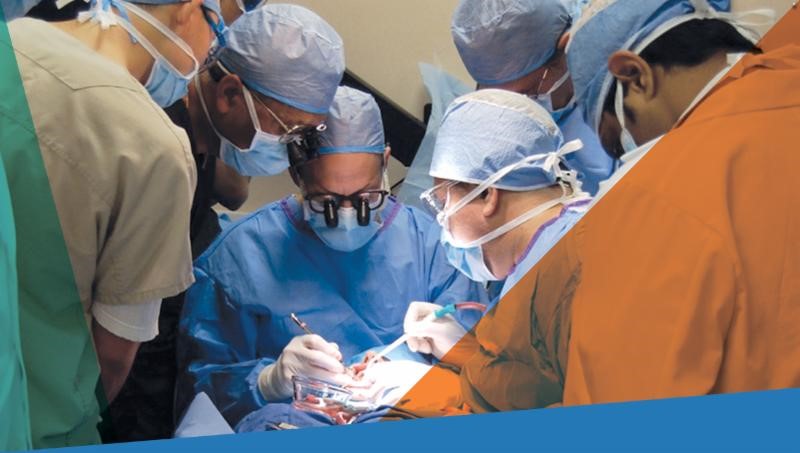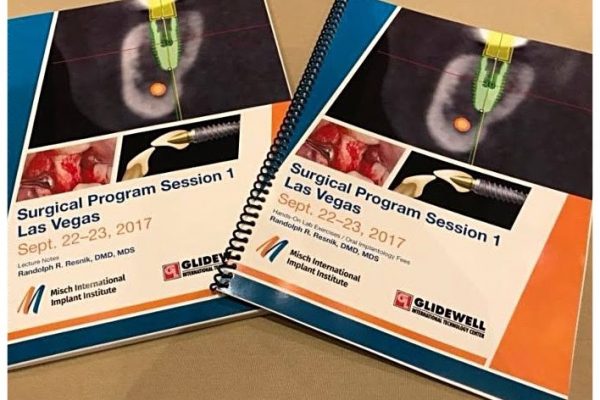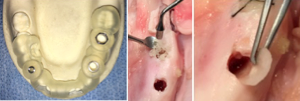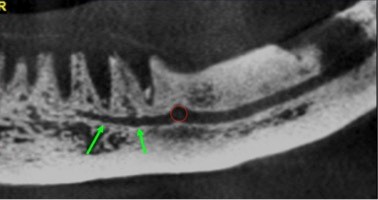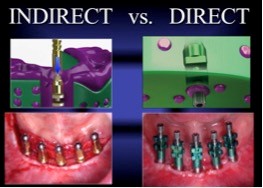IN MEMORIUM
It is with heavy hearts today that we say farewell to one of our close Resnik Implant Institute family members, Dr. Michael D. Ginder of Athens, Ohio. He was a Misch graduate and a favorite of the faculty and staff. He not only was an excellent clinician, he was a wonderful husband, father, and friend to all of us and he will be dearly missed. Taken too early, we offer our deepest condolences to his family during this difficult time.

Glidewell Laboratories (Newport Beach, CA) is the largest dental laboratory in the world. On average, how many packages does Glidewell handle per day in their laboratory?
a. 5,000
b. 8,000
c. 12,000
d. 18,000
ANSWERS:
#1: CBCT
No, the canal depicted by the green arrows is the incisive canal. The incisive canal contains the nerves and blood vessels which supply the anterior teeth. In the first molar region, the inferior alveolar nerve splits into its two terminal branches, the mental nerve and incisive nerve. The mental nerve exits the mental foramen and the incisive nerve continues anteriorly. There incisive nerve displays no sensory innervation to the soft tissue, therefore drilling through this canal will not lead to a neurosensory impairment.
#2: Prosthetic
- Direct (open tray) vs. Indirect (closed tray)
Almost all current research articles have shown that the DIRECT is far more accurate than the INDIRECT impression techniques. - Multiple Implants (Splint vs. No Splint)
Current research has shown that splinted multiple implants together lead to more accurate final impressions and master casts. Ideally the implants should be splinted with a low shrinkage material (e.g. GC Pattern Resin, Composite Resin) - Polyvinyl siloxane (PVS) vs. Polyether (PE)
In most studies, there exist no difference between PVS vs. PE. However, when implants are significantly angled (i.e. > 25 degrees), PVS is more accurate.
* Cabral LM, GuedesCG. Comparative analysis of 4 impression techniques for implants. Implant Dent. 2007;16:187–194.
* Papaspyridakos, Panos, et al. “Accuracy of implant impressions for partially and completely edentulous patients: a systematic review.” International Journal of Oral & Maxillofacial Implants29.4 (2014).
* Öngül, D., et al. “A comparative analysis of the accuracy of different direct impression techniques for multiple implants.” Australian dental journal57.2 (2012): 184-189.
* Kurtulmus-Yilmaz, Sevcan, et al. “Digital evaluation of the accuracy of impression techniques and materials in angulated implants.” Journal of dentistry42.12 (2014): 1551-1559.
#3: Legal
Statute of Limitations. In most states a patient must bring a medical malpractice claim fairly quickly—often between 6 months and 2 years, depending on the individual state. A failure on the part of the patient to initiate a claim within the applicable statutory time limit will lead to the claim being “time-barred” or past the deadline to file a lawsuit.
(A list of individual states statutes is listed on page 833 in the “Avoiding Complications in Oral Implantology” by R. Resnik and CE Misch)
Implant Study Of The Month Answer
In these studies, a mean bone area index increase of 1.6% per year for a fixed prostheses. For overdentures, the posterior bone area index was reduced by a mean of 1.1% per year.
Trivia Of The Month
d. 18,000


